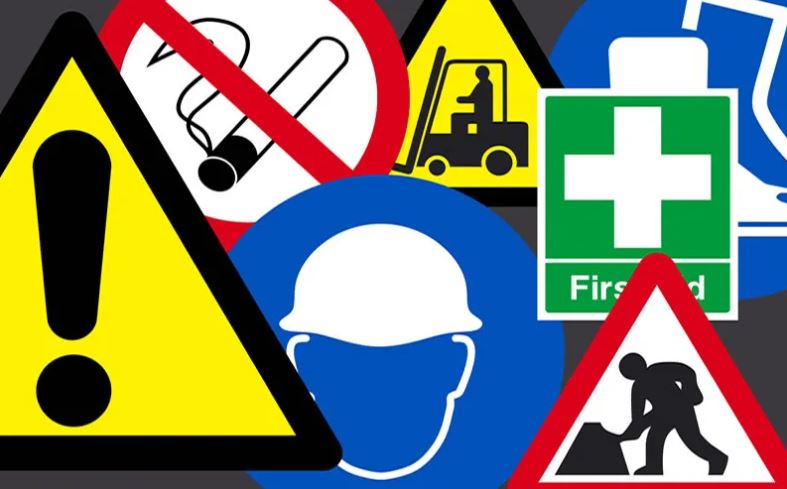Every year on April 28th, the World Day for Safety and Health at Work is observed to promote safe, healthy, and sustainable work environments. This day serves as a reminder of the importance of occupational health and safety in every workplace. Workplace safety is crucial not only to prevent accidents and injuries but also to promote employee well-being and productivity. In today’s fast-paced and demanding work environment, it is essential for organizations to prioritize the health and safety of their employees. This blog post will delve into the significance of occupational health and safety in today’s workplace, including identifying and mitigating workplace hazards, effective communication strategies for promoting workplace safety and health, the importance of employee training and education in workplace safety, measuring the success of occupational health and safety programs, and continuous improvement in workplace safety and health.
Occupational health and safety
Occupational health and safety (OHS) is a critical aspect of any workplace. It is concerned with identifying and managing risks to prevent accidents, injuries, and illnesses that can harm employees, damage the environment, and disrupt business operations. OHS is essential to protect employees’ physical and mental health, promote productivity, and reduce costs associated with workplace accidents and injuries.
The Human and Economic Costs of Workplace Accidents and Injuries
Workplace accidents and injuries can have a severe impact on employees, their families, and their employers. They can cause physical harm, emotional trauma, and financial losses. According to the International Labour Organization (ILO), about 2.78 million people die each year from work-related accidents and diseases, and 374 million suffer non-fatal injuries and illnesses.
Workplace accidents and injuries can also result in significant economic costs. They can lead to lost productivity, increased absenteeism, high turnover rates, and increased workers’ compensation and insurance costs. According to the National Safety Council (NSC), workplace injuries and illnesses cost the US economy $171 billion per year.
Regulatory Requirements for Workplace Health and Safety
Most countries have laws and regulations that require employers to provide a safe and healthy workplace for their employees. These regulations establish minimum standards for workplace safety and health and provide guidelines for identifying and managing workplace hazards. Failure to comply with these regulations can result in fines, legal action, and damage to a company’s reputation.
Also Read!
Benefits of a Safe and Healthy Workplace for Employees and Employers
A safe and healthy workplace has numerous benefits for employees and employers. For employees, it can reduce the risk of accidents and injuries, improve their physical and mental health, increase job satisfaction, and enhance their quality of life. For employers, it can improve productivity, reduce absenteeism and turnover rates, enhance their reputation, and reduce costs associated with workplace accidents and injuries.
The Role of Occupational Health and Safety in Employee Retention and Productivity
Employee retention and productivity are critical factors for any business’s success. An effective OHS program can help retain employees and increase their productivity by providing a safe and healthy work environment. When employees feel safe and valued, they are more likely to stay with their employer, perform better, and contribute to the company’s success.
Developing an Effective Occupational Health and Safety Program
Developing an effective OHS program involves identifying and assessing workplace hazards, developing policies and procedures to manage these hazards, and providing training and education to employees. An effective program should involve all levels of the organization and include regular inspections, audits, and evaluations to identify and address areas for improvement.
Identifying and Mitigating Workplace Hazards
One of the most crucial steps in ensuring workplace safety is identifying and mitigating potential hazards. Hazards can be found in various forms, such as physical, chemical, and biological hazards. Physical hazards include slippery floors, unguarded machinery, and heavy equipment. Chemical hazards are substances that can cause illness or injury, such as toxic chemicals, fumes, and gases. Biological hazards include infectious agents such as bacteria and viruses.
Employers must identify these hazards and take steps to mitigate them. For example, employers can provide personal protective equipment (PPE), establish safety protocols, and train employees on proper safety procedures.
Effective Communication Strategies for Promoting Workplace Safety and Health
Effective communication is critical to promoting workplace safety and health. Employers must communicate safety policies, procedures, and hazards effectively to employees. So, Employers can use various communication methods such as safety meetings, safety training sessions, posters, and signs to promote workplace safety.
Employers must also encourage employees to report any safety concerns or hazards they identify in the workplace. This open communication can help identify potential hazards and allow for timely intervention.
The Importance of Employee Training and Education in Workplace Safety
Employee training and education are essential components of workplace safety. Employers must train employees on safety procedures, emergency preparedness, and hazard identification. Employees should also receive regular safety updates and refresher training to stay informed and up-to-date.
Training and education can help employees develop the skills and knowledge necessary to work safely and identify potential hazards in the workplace. Additionally, training and education can improve employee morale, as employees feel valued and supported when their employer invests in their safety and well-being.
Measuring the Success of Occupational Health and Safety Programs
Employers must measure the success of occupational health and safety programs to ensure that they are effective. Employers can measure success by analyzing injury and illness rates, conducting safety audits, and soliciting employee feedback. By measuring the success of occupational health and safety programs, employers can identify areas that need improvement and make necessary changes to reduce workplace hazards and improve safety.
Continuous Improvement in Workplace Safety and Health
Continuous improvement is essential for maintaining a safe and healthy workplace. Employers must continuously monitor workplace safety and health practices and identify areas that need improvement.
Employers can involve employees in the continuous improvement process by soliciting their feedback and suggestions for improving workplace safety. By working together to continuously improve workplace safety and health practices. Employees and employers can create a culture of safety that promotes employee well-being and organizational success.
Conclusion
In conclusion, occupational health and safety are critical components of a successful workplace. Employers must identify and mitigate potential hazards, communicate safety policies effectively, train employees on safety procedures, measure program success, and continuously improve workplace safety and health practices. By prioritizing workplace safety and health, employers can protect their employees and ensure the long-term success of their organization.









